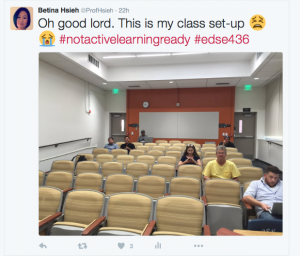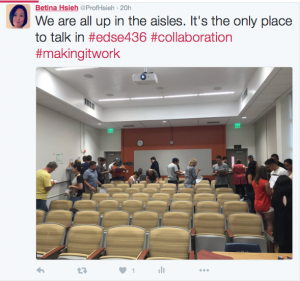
I mentioned briefly in yesterday’s post that a grant I recently submitted failed to make it past the first round of consideration. This was particularly disheartening given that it was a mentoring grant that I had worked hard on, pushing beyond myself to approach people that I really admire to ask if they would support me through the projected multi-year effort. I also pushed beyond myself in terms of scope, methodology, and topic, truly honoring an area of research that I’m committed to, but haven’t had the time or energy to conceptualize previously. And, I pushed beyond myself in perseverance as there were several logistical hurdles that I didn’t know about, being new to the grant application process.
A few years ago, the notification of this rejection would have really bothered me for days, or even, perhaps weeks. It would have been a sign that I wasn’t really cut out for academia. The checked box next to “Scholar does not have a significant enough publication record to indicate ability to produce results of the proposal” would have meant something about who I am and my capacity to do the research I feel called to do.
But, that’s actually not what happened yesterday.
I got the rejection while having lunch with a friend and senior colleague who was immediately reassuring and thinking of possible other funding sources. Upon breaking the news to colleagues and my potential mentors who had supported me through the grant process, they all expressed surprise and disappointment for me, and urged me to persevere, seek other funding and reach out to them for support on this valuable work.
And, I was able to hear them.
I was not defined by this rejection as I might have once been. Because my worthiness as an academic, as a researcher and as a person doesn’t come from this foundation. My path is long. I know my work is important. And I know I can get it done–with time, collaboration and support.
Don’t get me wrong. I’m not leaping for joy, at least not about the rejection. But I am actually joyful. I feel joy at having pushed myself beyond who I know myself to be. I’m proud that I took a step out of my comfort zone to explore a topic that is critically important to me at a scope that I was uncertain I could achieve. I’m thankful that I had the guts to approach my mentors and had the privilege to engage with them around these topics. I am certain that I will try again, and that eventually I will succeed.
As I close out this first week of the 20-day challenge, I do so with the knowledge that I am practicing what I preach–taking risks, falling, getting up again, and trying to do better. I remind myself that not every investment pays off immediately, but without trying, I’ll always be left wondering, “What if?” Today, I will breathe and regroup, taking time for much needed self-care and dedicating time to other research projects and to my first love, teaching. But soon, I will try again, with help, support and the knowledge that tomorrow is a new day.








